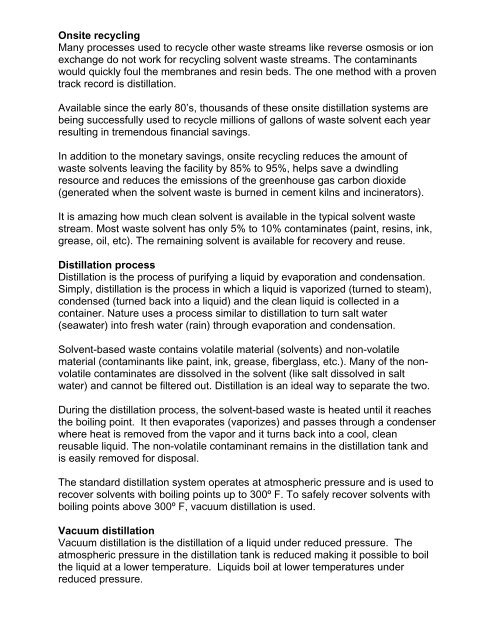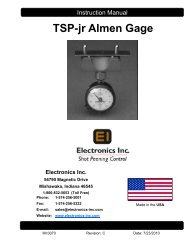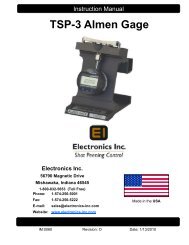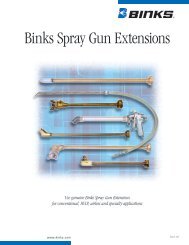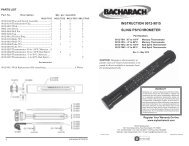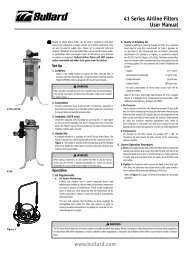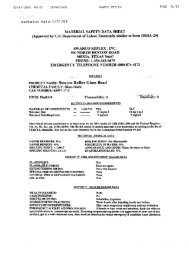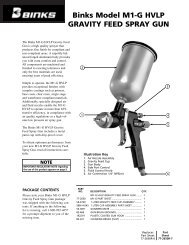Onsite Solvent Recycling - Finish Thompson Inc.
Onsite Solvent Recycling - Finish Thompson Inc.
Onsite Solvent Recycling - Finish Thompson Inc.
- No tags were found...
You also want an ePaper? Increase the reach of your titles
YUMPU automatically turns print PDFs into web optimized ePapers that Google loves.
<strong>Onsite</strong> recycling<br />
Many processes used to recycle other waste streams like reverse osmosis or ion<br />
exchange do not work for recycling solvent waste streams. The contaminants<br />
would quickly foul the membranes and resin beds. The one method with a proven<br />
track record is distillation.<br />
Available since the early 80’s, thousands of these onsite distillation systems are<br />
being successfully used to recycle millions of gallons of waste solvent each year<br />
resulting in tremendous financial savings.<br />
In addition to the monetary savings, onsite recycling reduces the amount of<br />
waste solvents leaving the facility by 85% to 95%, helps save a dwindling<br />
resource and reduces the emissions of the greenhouse gas carbon dioxide<br />
(generated when the solvent waste is burned in cement kilns and incinerators).<br />
It is amazing how much clean solvent is available in the typical solvent waste<br />
stream. Most waste solvent has only 5% to 10% contaminates (paint, resins, ink,<br />
grease, oil, etc). The remaining solvent is available for recovery and reuse.<br />
Distillation process<br />
Distillation is the process of purifying a liquid by evaporation and condensation.<br />
Simply, distillation is the process in which a liquid is vaporized (turned to steam),<br />
condensed (turned back into a liquid) and the clean liquid is collected in a<br />
container. Nature uses a process similar to distillation to turn salt water<br />
(seawater) into fresh water (rain) through evaporation and condensation.<br />
<strong>Solvent</strong>-based waste contains volatile material (solvents) and non-volatile<br />
material (contaminants like paint, ink, grease, fiberglass, etc.). Many of the nonvolatile<br />
contaminates are dissolved in the solvent (like salt dissolved in salt<br />
water) and cannot be filtered out. Distillation is an ideal way to separate the two.<br />
During the distillation process, the solvent-based waste is heated until it reaches<br />
the boiling point. It then evaporates (vaporizes) and passes through a condenser<br />
where heat is removed from the vapor and it turns back into a cool, clean<br />
reusable liquid. The non-volatile contaminant remains in the distillation tank and<br />
is easily removed for disposal.<br />
The standard distillation system operates at atmospheric pressure and is used to<br />
recover solvents with boiling points up to 300º F. To safely recover solvents with<br />
boiling points above 300º F, vacuum distillation is used.<br />
Vacuum distillation<br />
Vacuum distillation is the distillation of a liquid under reduced pressure. The<br />
atmospheric pressure in the distillation tank is reduced making it possible to boil<br />
the liquid at a lower temperature. Liquids boil at lower temperatures under<br />
reduced pressure.


